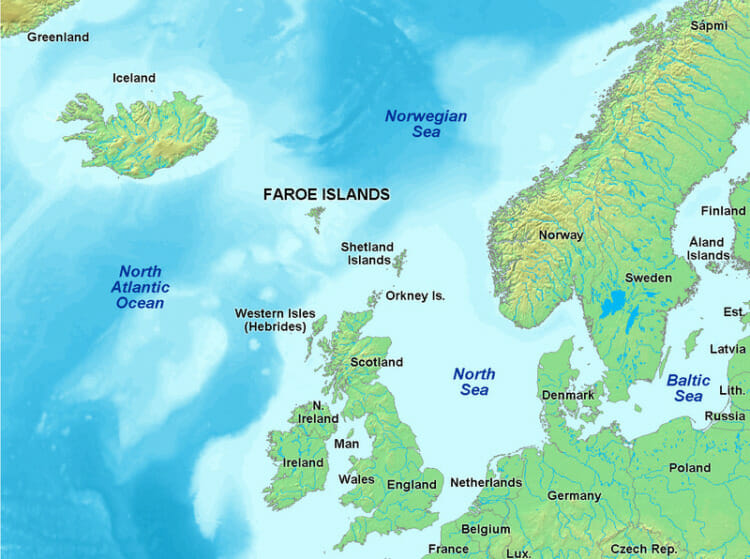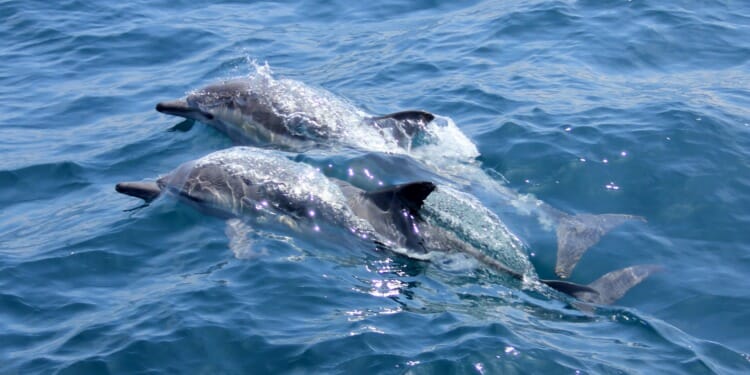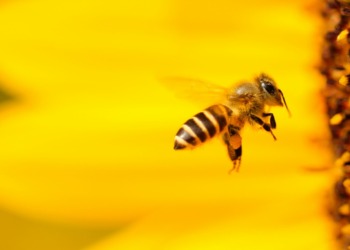Grindadrap is a tradition of hunting dolphins and whales in the Faroe Islands, which has gone on for centuries, forming a fair share of the local cuisine.
However, the death of over 1,400 white-sided dolphins in the islands which took place last weekend, together with the publication of a graphic video and images displaying the aground dolphins “being dragged up” in bloody water, even distressed hunting enthusiasts.
Taking place on Sunday, not far from Skalabotnur, Eysturoy, (the islands’ longest fjord), the level of deaths has sparked anger from animal rights activists and has led to a discord between those who are against dolphin hunting and those who believe “they are still acting sustainably.”
According to a journalist for Faroese public broadcaster Kringvarp Foroya, Trondur Olsen, Sunday’s public response was “one of bewilderment and shock because of the extraordinarily big number.”
But whale and dolphin hunting takes place across the year in the Islands, which is an independent Danish archipelago, which can also be described as a “chain” or series of islands dispersed in the ocean, rivers, or lakes. Such practices are legal and consist of roughly 53,000 people within Iceland and Norway. The dolphins and whales are rounded up by boats “into a bay”, and then the animals are put on the shore, to be killed with an appliance that cuts spinal cords.

Hans Jacob Hermansen, who is Faroese Grind Association’s former chairman, (a group in favour of Grindadrap), believes that the slaughters subvert the conduct of others who hunt whales and further aggravate anti-hunters.
Despite the fact that the scale of the dolphin killings were significant, officials failed to respond to it on time. A district sheriff for the region, Jens Jensen, said that his “authorization” of the dolphin deaths had been postponed, as he was mountain hiking at the time. Jensen also said that considering the big quantity of the dolphins, “he had approved the use of knives.”
According to the Faroe Islands Marine biologist, Bjarni Mikkelsen, the incident marked the highest total of dolphins killed over the span of a single day within the Faroe Islands, which forms part of the Kingdom of Denmark. The previous record breaker was in 1940, when 1,200 dolphins were killed.
Anger over killing of 1,400 dolphins in one day in the Faroe Islandshttps://t.co/t2OUBorRMP
— BBC News (World) (@BBCWorld) September 14, 2021
Related Articles: When Humans Are the Cause, Humans Must Be the Solution | Seaspiracy: Shocking Revelations but Wrong Data and Wrong Message
How unethical were the killings?
Faroese Whalers Association’s chairman, Olavur Sjurdarberg, accepted that the number of killings was extreme, in a BBC interview. He said “[i]t was a big mistake,” and that “[w]hen the pod was found, they [the hunters] estimated it to be only 200 dolphins.”
Despite this, Sjurdur Skaale, who is Denmark’s MP for the Faroe Islands, affirmed that the incident was entirely legal and even endorsed the hunt, stating that it is “humane” when carried out justly.
This process consists of a “specially designed lance,” which severs a dolphin or whale’s spinal cord, before cutting the animal’s neck. According to Skaale, this technique makes it take “less than a second to kill a whale.”
However, the marine conservation charity, Sea Shepherd, do not agree with this, stating that dolphin and pilot whale killings are hardly ever as swift as the Faroese government claims:
“Grindadrap hunts can turn into drawn-out, often disorganised massacres,” the group says, adding “[t]he pilot whales and dolphins can be killed over long periods in front of their relatives while beached on sand, rocks or just struggling in shallow water . . .”
Nevertheless, Grindadrap is clearly a custom of the islands and is, therefore, an acceptable practice within Faroese culture. But it is true that the sheer size of last weekend’s killings has prompted outrage, even amongst those who support hunting, which shows that an ethical line has most certainly been crossed.
It is also true that some techniques induce less suffering than others, but the aforementioned method of killing the animals “humanely” is under dispute. The implication is that the ethical way to go about slaughtering whales or dolphins has yet to be found. Thus, it is not just the scale of the killings which is immoral, but perhaps also the way in which they were killed.
Editor’s Note: The opinions expressed here by Impakter.com columnists are their own, not those of Impakter.com.— In the Featured Photo: Dolphins Swimming. Featured Photo Credit: Leon Overweel.









